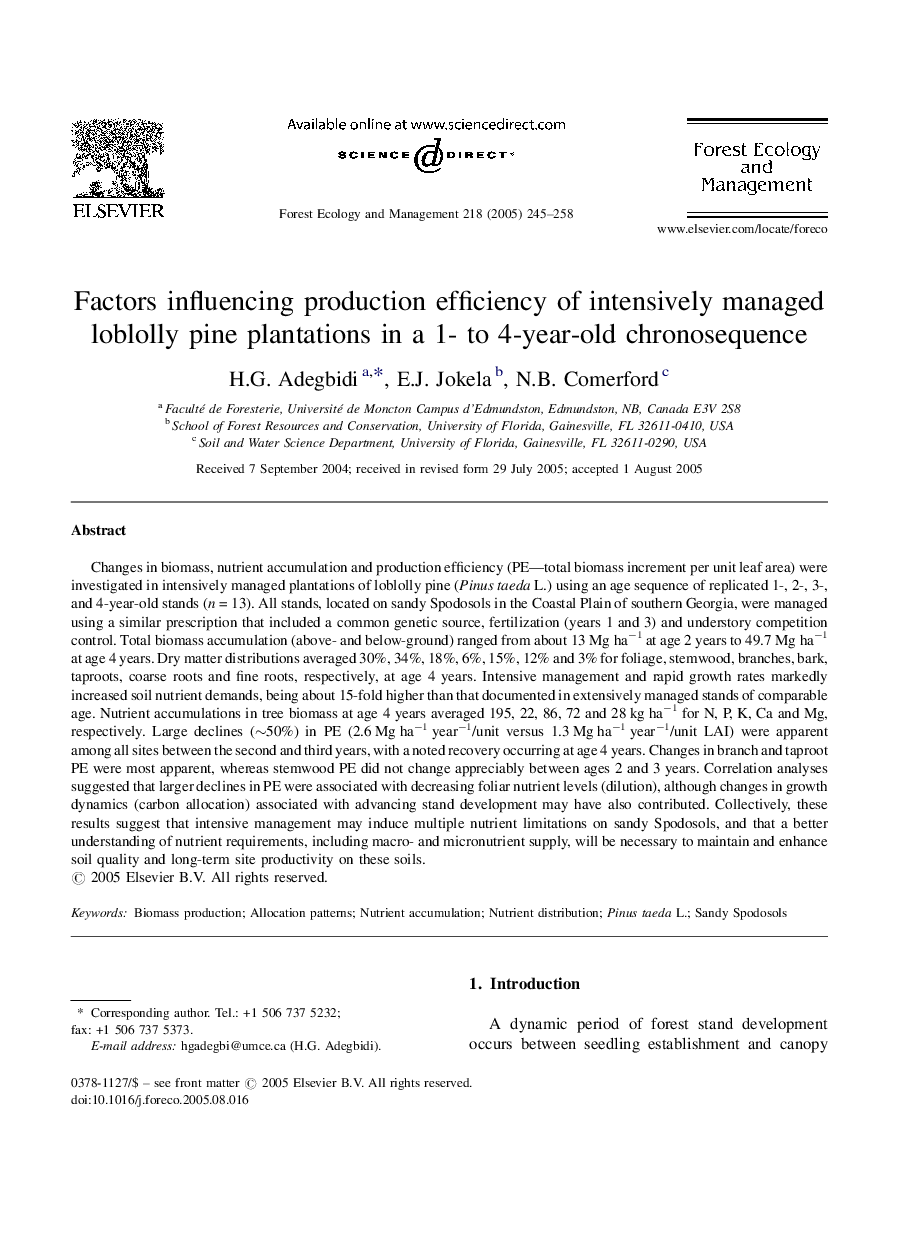| Article ID | Journal | Published Year | Pages | File Type |
|---|---|---|---|---|
| 9620132 | Forest Ecology and Management | 2005 | 14 Pages |
Abstract
Changes in biomass, nutrient accumulation and production efficiency (PE-total biomass increment per unit leaf area) were investigated in intensively managed plantations of loblolly pine (Pinus taeda L.) using an age sequence of replicated 1-, 2-, 3-, and 4-year-old stands (n = 13). All stands, located on sandy Spodosols in the Coastal Plain of southern Georgia, were managed using a similar prescription that included a common genetic source, fertilization (years 1 and 3) and understory competition control. Total biomass accumulation (above- and below-ground) ranged from about 13 Mg haâ1 at age 2 years to 49.7 Mg haâ1 at age 4 years. Dry matter distributions averaged 30%, 34%, 18%, 6%, 15%, 12% and 3% for foliage, stemwood, branches, bark, taproots, coarse roots and fine roots, respectively, at age 4 years. Intensive management and rapid growth rates markedly increased soil nutrient demands, being about 15-fold higher than that documented in extensively managed stands of comparable age. Nutrient accumulations in tree biomass at age 4 years averaged 195, 22, 86, 72 and 28 kg haâ1 for N, P, K, Ca and Mg, respectively. Large declines (â¼50%) in PE (2.6 Mg haâ1 yearâ1/unit versus 1.3 Mg haâ1 yearâ1/unit LAI) were apparent among all sites between the second and third years, with a noted recovery occurring at age 4 years. Changes in branch and taproot PE were most apparent, whereas stemwood PE did not change appreciably between ages 2 and 3 years. Correlation analyses suggested that larger declines in PE were associated with decreasing foliar nutrient levels (dilution), although changes in growth dynamics (carbon allocation) associated with advancing stand development may have also contributed. Collectively, these results suggest that intensive management may induce multiple nutrient limitations on sandy Spodosols, and that a better understanding of nutrient requirements, including macro- and micronutrient supply, will be necessary to maintain and enhance soil quality and long-term site productivity on these soils.
Keywords
Related Topics
Life Sciences
Agricultural and Biological Sciences
Ecology, Evolution, Behavior and Systematics
Authors
H.G. Adegbidi, E.J. Jokela, N.B. Comerford,
